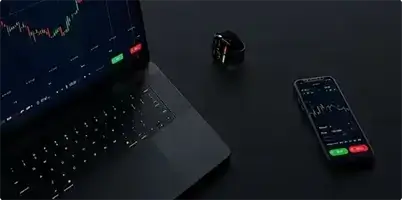
Darren Krett
Tuesday 31 January 2023
Elements of an Option Price
0
Comments (0)
Darren Krett
Friday 10 February 2023
Share on:
Post views: 9404
Categories
General
OPTION: An option on an underlying asset is either the right to buy the asset (a call option) or the right to sell the asset (a put option) at some predetermined price and within some predetermined time in the future. Notice that the key feature here is that the owner has the right but not the obligation. If the owner of the option chooses not to exercise this right within the predetermined time period, the option and its opportunity cease to exist. The seller of the option however, does have the obligation to fulfill the requirements of the option if the option is exercised. In the case of a call option on stock, the seller has sold the right to buy that stock. The seller of the call option is therefore obligated to sell the stock to the call option owner if the option is exercised. In the case of a put option on a stock, the seller of the option has sold the right to sell that stock. The seller of the put option is therefore obligated to buy the stock from the put option owner if the option is exercised. PLAYERS Speculators Hedgers Arbitrageurs
HEDGING VS. SPECULATION -Hedging as a Risk Management Tool (Insurance) -Provides protection against falling prices for those who plan to sell the underlying in the future -Provides protection against rising prices for those who plan to buy -Protection for existing positions in futures or equities -Speculation -Assuming risk that is transferred by the hedger implied volatility -Hope to profit from a specific directional move in underlying and/or -Risk/reward characteristics STRIKE PRICE/EXERCISE PRICE: The exercise price (also known as the the option is exercised. For example, a call contract may allow the buyer to strike price) is the price at which the underlying contract/stock changes hands if purchase 100 shares of IBM at any time in the next 2 months at an exercise price of $100.
EXPIRATION DATE: The expiration date is the date on which the option expires. All holders of options must indicate their desire to exercise by this date_ After the expiration date, the option contract becomes worthless, although options that close with a certain amount of value are automatically exercised by the clearinghouse.
AMERICAN STYLE OPTIONS vs EUROPEAN STYLE OPTIONS: American Options-American style options may be exercised at anytime on or before the expiration date. European Options European style options may only be excrcised on the expiration date.
INTRINSIC VALUE/PARITY: This is the positive difference between option's strike price and the price of the underlying contract, or the amount t the option would be worth if expiring at this moment. The price of the future m be above the strike price of a call option in order for that call to have intrin value (Ex: the future is trading at 103 so therefore the 100 call-the right to b the future at 100-has intrinsic value of 3). Conversely, the price of underlying future must be below the strike price of a put option the right to the future at that price in order for that put to have intrinsic value.
EXTRINSIC VALUE/TIME VALUE: This is the value the market places or time the option has left until expiration, or the difference between the total v of the option and the intrinsic value. An out-of-the-money options value is pu extrinsic. (Ex: if the 100 put is trading at 6 with the future at 98, the intr value of that put is 2-if you sold the future at 100 you could turn around and it back for 98 and immediately make 2. The balance of the premium--4-w therefore be the extrinsic value of that put.)
OUT OF THE MONEY (OTM): An option is OTM when its value is purely A call option is out of the money when its strike price is above the sent underlying market price (Ex: if the market is trading at 97.50, the 100 call IS OTM.) A put option is out of the money when its strike price is below the current underlying market price (Ex: the market is trading at 101.50 so therefore the 100 put is OTM.)
IN THE MONEY (ITM): An option is considered to be ITM when at least part of its value is intrinsic. When a call option is in the money, it has a strike price below the current market (Ex: the 100 call with the market at 104). When a put option is in the money, it has a strike price above the current market (Ex: the 100 put with the market at 96).
AT THE MONEY (ATM): An option is considered to be ATM when its strike price and the current market price of the underlying contract are approximately the same.
SPOT PRICE: The current market price of a cash underlying. For example the may be trading at 11,700.'spot price' of the Dow Jones Industrials is 11,500, while the June future contract
EXERCISE: When you exercise an option, you are advising the clearing firm that you are taking delivery of the underlying (or cash) in the case of a call, or making delivery of the underlying in the case of a put.
ASSIGNMENT: Assignment occurs when the option seller receives notice that the option has been exercised by the optionholder. In the case of a call that delivery at the specified strike price. obligates him/her to make delivery of the underlying or, in the case of a put, take delivery at the specific strike price
BULLISH: An outlook that is expecting rising markets. Also, a position that benefits from a rising market.
BEARISH: An outlook expecting falling markets. Also, a position that benefits. from a falling market.

Darren Krett
Tuesday 31 January 2023
0
Comments (0)

Tyler Krett
Wednesday 14 December 2022
0
Comments (0)